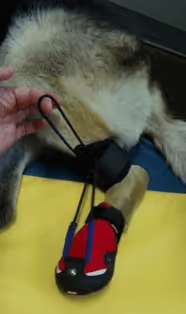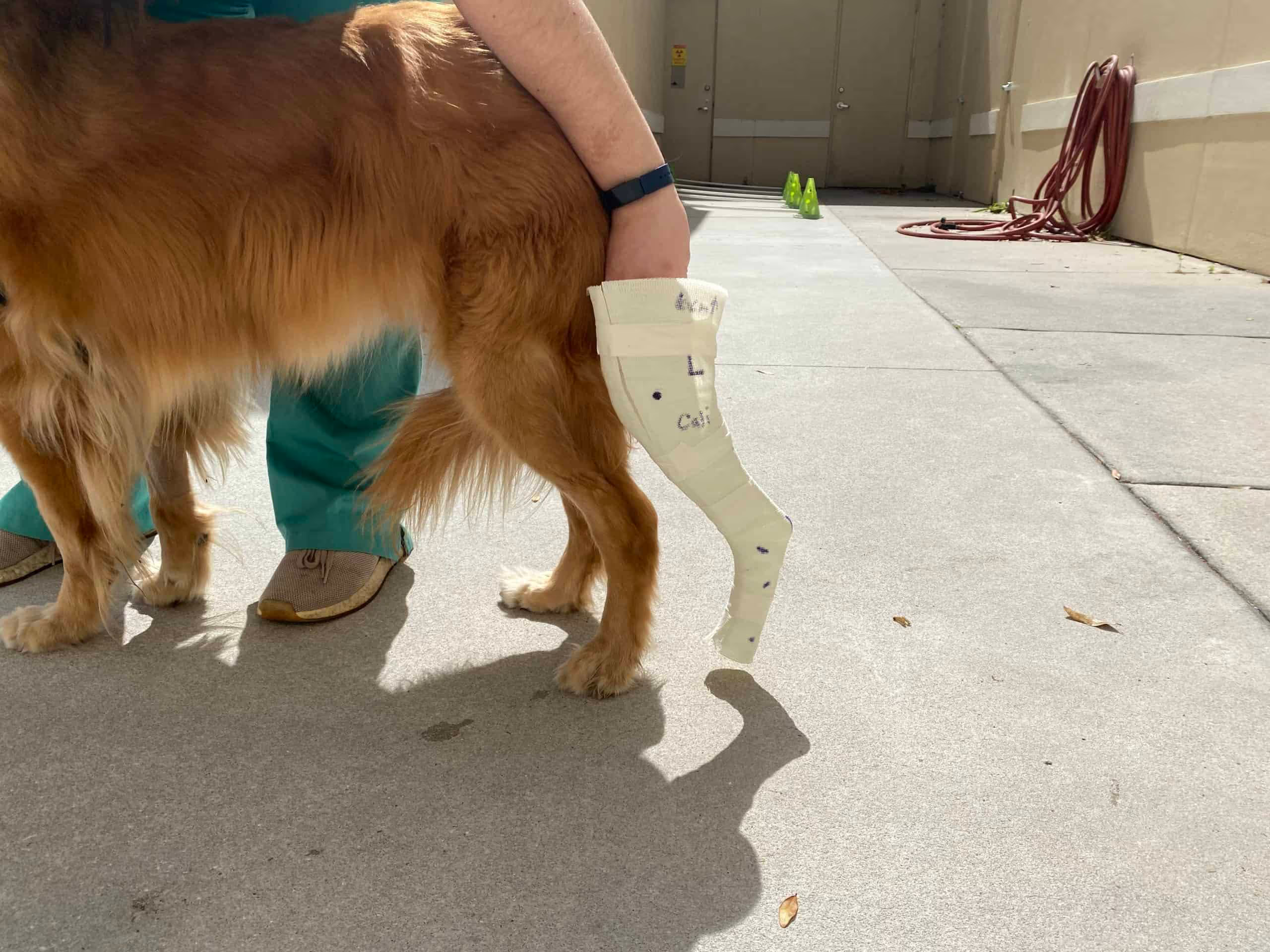Paw Orthoses

Injuries and pathology of the paw are often overlooked; yet, they can result in significant discomfort and dysfunction. Thoracic paw injuries are especially problematic because of the normal disproportionate weight distribution compared with the pelvic limbs. Pelvic paw injuries also markedly affect comfort and ambulation because forward drive in faster gaits originates in the pelvic limbs. Additionally, paw injuries ultimately affect the entire mechanical structure regardless of affected limb because compensatory or adaptive gaiting alters function up the kinetic chain (proximal joints, spine, muscles, etc.). Examples common to digital pathology include the following: osteoarthritis of the metacarpal or metatarsal-phalangeal joints; sesamoid bone fractures; flexor tendon laceration, degeneration, or contraction; pathologic supination or pronation; digital luxation; and neuropathy causing loss of dorsiflexion, among others. Orthotic devices can be used to improve comfort, assist in healing, or rehabilitate some injuries. The challenge is affixing such devices to the limb; commonly, the device must include the antebrachium or crus for proper suspension. Device design must take into account pathology, overall therapeutic plan and prognosis, limb topography, normal and pathologic limb function, and practicality and comfort. Examples of 2 devices are shown in Figs 3 and 4. The first is a typical orthosis for severe pronation including a custom insert for digital realignment and a hinged paw segment with flexor assist. Patients with this injury have reduced propulsion potential because flexor tendon failure prevents active engagement with the ground (push off). The second device assists in dorsiflexion and propulsion in pelvic limb neuropathy. Using an adjustable elastic cord, the digits within the bootie are dorsiflexed while flexion of the tarsus and cranial swing of the pes are assisted by elastic recoil for ground clearance.[gallery ids="https://orthopets.com/wp-content/uploads/2018/03/Screen-Shot-2018-03-15-at-1.11.07-PM.png|Fig. 3 A custom orthosis with paw insert for digital alignment and dorsiflexion assist.,https://orthopets.com/wp-content/uploads/2018/03/Screen-Shot-2018-03-15-at-1.11.11-PM.png|Fig. 4 Sciatic sling orthosis for sciatic neuropathy causing failure of digital dorsiflexion. Common applications include degenerative neuropathy, fibular nerve trauma, intervertebral disc disease, and lumbosacral stenosis." columns="2" link="file"]




